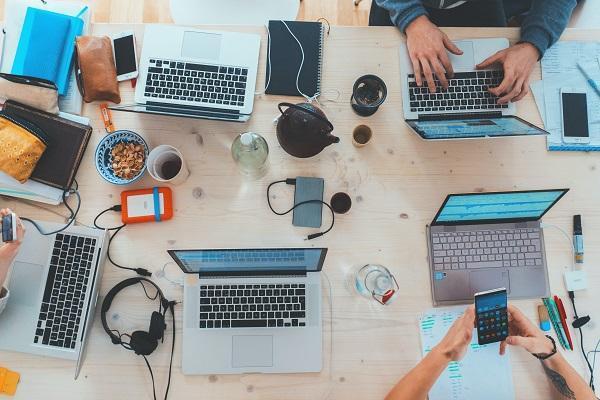Comfort at your Computer
Comfort at your Computer

In these past few months, many of us have been spending a lot more time in front of our computer screens: whether conference calling for business or pleasure, teaching on screen, or spending more leisure time inside our four walls.
When we work at a computer we tend to be sitting on a chair. And most of us have some habits of asymmetry or unnecessary holding of muscles when we sit for any length of time. With the brightness of a screen, or focus on a particular task, we tend to lose some sense of ourselves, the moving image taking over from our physical senses. Add to that staring at a screen at a set distance from our eyes for hours a day, and it is a recipe for un-ease.
We’re not designed to sit still. Our bio-mechanics are designed for movement. It’s why children have to be trained to sit for schooling, and little children find it one of the hardest things to do. It is not inherent to our system.
Even ribs were built first of all for motoring around, and then later the ribs enclosed our lungs. We originate from water creatures, with gills. Lungs came along second.
Why is that important to know? Well, if you think your ribs are only there to protect your most important organs (the heart and lungs) you’ll think of them as protective armour, and be more prone to stiffening them, but if you think of your ribs as being around to help you and your spine be and stay mobile, to move more easily, I’ll bet you’d then move them a little more than if you imagine the latter idea.
So, how does this help one’s comfort at the screen? Often I see clients who have developed shoulder pain, or back pain whilst working. And its usually from a lack of support from the base, added to holding themselves stiffly. If that’s just once in a while, but if its day in and day out, leaning to one side (probably the opposite one from your mouse) then at some point your back/neck/shoulder may start to complain at the habitual asymmetrical posture of the spine, ribs and fascia (connective tissue- everything but the bones).
When we’re sitting, using our hands, we need a good base of support, from the bottom and the feet. When we sit behind the sitting bones, (more at the top of the buttocks) then we’re using muscular effort to hold ourselves up instead of the more structural support of the skeleton. Which then limits how we can hold our ribs, and from that use and move our shoulders and neck. If we don’t use our legs to assist, then we’re also missing out on an easier way to support the low back and abdomen. And over time, the small habits we have of sitting, little blocks missing in the ladder of support for our shoulders and head can add up in a negative way.
If you think of needing to move as you work, even if constrained by your eyes looking at the screen or your fingers on the keyboard, then there’s more room to play. with changing the weight over your buttocks or feet as you type (which I’m doing as I type this. A little micro-dancing in the chair always livens up life I find!
If you don’t think that there’s a connection between the freedom of your shoulders and your fingers, then you wouldn’t think to lessen the strain on your wrists by thinking about your spine and shoulders, or to assist discomfort in the shoulders with finding greater mobility in your ribs, so that they can support the shoulders in any position.
In case you’re wondering the benefits you might feel from joining a lesson, here some comments from a recent Feldenkrais lesson:
“Thanks for a great session this morning. Am finding the process so interesting in how it resets the body, which is then emotionally transformative.”
“THAT WAS GREAT. I felt very much lighter after the moving”
“Wonderful to feel a different sensation afterwards. Much ‘softer’ neck and jaw, and my breath seemed much smoother and more even.”
I loved this session. My pelvis felt as though it was lighter and I was able to find greater flexibility in the spine. Thank you, Emma!”
Photo credit: Marvin Meyer @Unsplash.
Thanks! Yes, Feldenkrais can help with most musculoskeletal pain.
Yes, Eva, as we are not a bag of parts, but an interconnected system, when we work on one area we can improve the way we use other parts.
Hello! Thank You so much for the article, it is very interesting to learn about such a strong connection between our seemingly independent parts of the body! Do I understand correctly that the exercises You proposed help to cope with pain not only in the back, but also in other parts of the body?